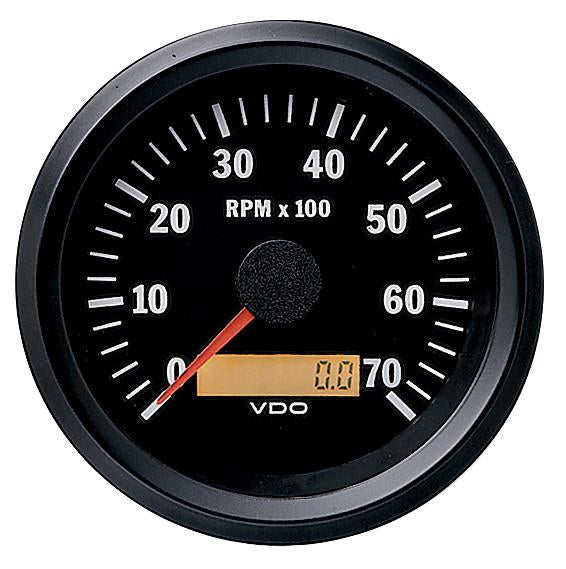Specialist Tips for Maintaining and Adjusting Your Tachometer
Specialist Tips for Maintaining and Adjusting Your Tachometer
Blog Article
The Relevance of a Tachometer in Keeping Track Of Engine Speed and Efficiency in Automotive Applications
In the realm of automotive engineering, the tachometer stands as a crucial instrument in the chauffeur's arsenal, offering a straight window right into the inner operations of an automobile's engine. Beyond its function as a simple scale of changes per min (RPM), the tachometer offers as a critical device for fanatics and professionals alike, using real-time understandings right into engine performance and health and wellness.
Relevance of Keeping An Eye On Engine RPM
Keeping an eye on engine RPM, or changes per minute, is an essential aspect of vehicle maintenance and efficiency evaluation. Engine RPM directly associates with the rate at which the engine's crankshaft rotates, suggesting how quickly the engine is running.
In addition, checking engine RPM is necessary for performance examination in auto racing and high-performance automobiles. Maintaining ideal RPM levels is crucial for attaining peak power result and velocity. Racers commonly make use of tachometers to ensure they are running within the optimal RPM array for maximum efficiency. In recap, checking engine RPM is not only crucial for identifying problems however likewise for optimizing engine efficiency in various auto applications.

Benefits of Real-Time Data
In automotive applications, real-time information plays a vital duty in supplying immediate insights into the performance and problem of the vehicle. By continually checking various specifications such as engine rate, temperature, fuel intake, and extra, real-time information provides numerous advantages that contribute to boosted effectiveness and security when driving.
Additionally, real-time information helps with efficiency optimization by providing instant feedback on driving practices and engine effectiveness. Drivers can change their actions in real-time based on this details to achieve better fuel economic climate and extend the life expectancy of their vehicle.

Moreover, real-time data plays a vital duty in modern automotive diagnostics, enabling technicians to promptly identify and deal with malfunctions. This results in reduced downtime, reduced maintenance prices, and eventually, improved overall automobile reliability and longevity (tachometer). By taking advantage of the power of real-time data, auto stakeholders can make informed decisions that positively affect both the performance and longevity of the car
Impact on Equipment Shifts
Efficient equipment changes in automotive applications dramatically affect total performance and driving experience. The tachometer plays a critical function in maximizing equipment shifts by offering real-time engine rate information to the motorist. When approaching the redline on the tachometer, it signals the driver to upshift to stop over-revving the engine and triggering possible damages. On the other hand, downshifting at the best moment can help maintain the engine in its power band, guaranteeing receptive acceleration when required.
Moreover, the tachometer aids in achieving smoother gear news changes, especially in manual transmissions. By keeping track of engine speed, vehicle drivers can carry out equipment changes at the ideal RPM array, minimizing snagging activities and reducing wear on the transmission elements. This accuracy on duty adjustments not just improves driving comfort yet additionally adds to fuel efficiency.
Enhancing Gas Effectiveness
Offered the vital role the tachometer plays in enhancing equipment shifts for efficiency and engine health and wellness, it directly adds to optimizing fuel effectiveness in automotive applications. By offering real-time comments on engine rate, the tachometer helps drivers in keeping the most efficient RPM array for gas economy. When vehicle drivers continually keep an eye on the tachometer and readjust their motoring behaviors accordingly, they can avoid unneeded gas intake caused by over-revving or lugging the engine.
Moreover, the tachometer helps vehicle drivers identify the most fuel-efficient see it here gear to be in at any type of given moment, preventing the engine from functioning more difficult than required. This is particularly vital throughout velocity and cruising, where remaining in the right equipment can substantially impact fuel performance. In addition, the tachometer can notify chauffeurs to potential mechanical concerns that might be negatively affecting gas economic situation, such as a slipping clutch or a stopped up air filter. Finally, the tachometer functions as a beneficial tool in boosting gas efficiency by advertising optimal driving behaviors and recognizing locations for improvement in the car's performance.

Taking Full Advantage Of Engine Long Life
The tachometer's function in monitoring engine speed and efficiency is instrumental in making sure the long life of automotive engines. Checking the tachometer allows motorists to stay within the suggested RPM array for their vehicle, preventing unneeded pressure on the engine and expanding its lifespan.

Final Thought
To conclude, the tachometer plays a crucial look at this website function in keeping an eye on engine rate and efficiency in automotive applications. By offering real-time data on RPM, it enables effective equipment changes, boosted gas effectiveness, and taken full advantage of engine long life. This device is essential for keeping ideal engine performance and guaranteeing the general functionality of a car.
Report this page